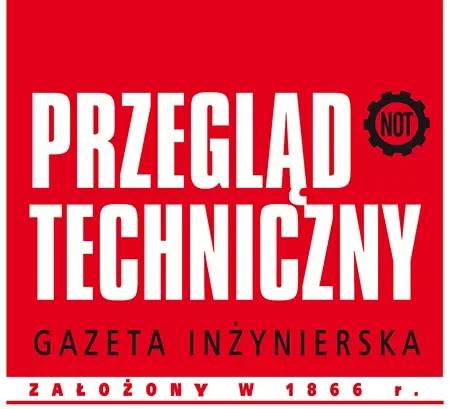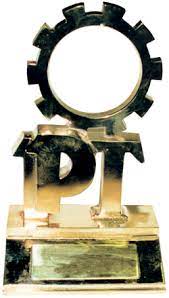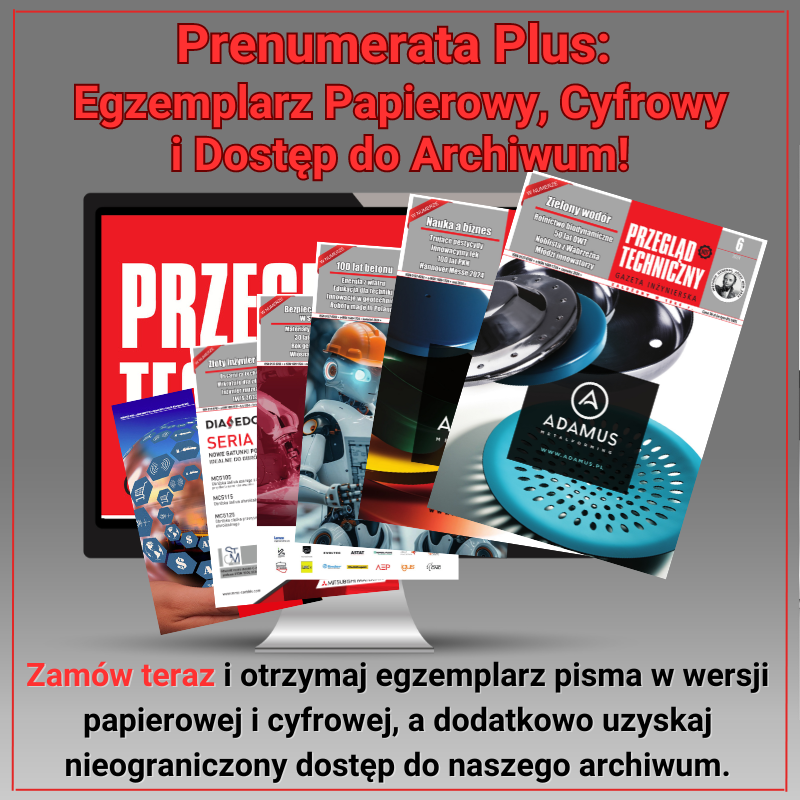The company’s own path of building devices for non-invasive medical and dental diagnostics using microwave technology puts MediSensonic among the pioneers in the medtech market. The groundbreaking solutions being developed at the company are ahead of national and global trends in this field. Electronics engineer Lukasz Pytlarczyk, head of the research and development team at MediSensonic S.A., talks about the implementation of innovative projects in an interview with Jolanta Czudak.
Working for a technology company is fulfilling for an electronics engineer?
Not just for me, but for all tech developers associated with MediSensonic. The R&D team I coordinate includes engineers from different professions, and each of them has a thirst for knowledge. We learn from each other. We include people with academic degrees and those in doctoral studies. The interdisciplinary team, composed of experts from different fields, produces great projects. We are constantly expanding our competence, so we can create breakthroughs in the field of non-invasive medical and dental diagnostics.
Does the team initiate these projects, or individual tech developers?
Before the R&D team was formed, 5 years ago MediSensonic started in a tiny group to develop individual products. One of the first was a device for measuring and evaluating blood flow in the dental pulp, using microwave technology (Microwave Pulp Vitality Tester -MPVT). The creation of diagnostic products using microwaves was initiated at MediSensonic by a prominent specialist in the field, Dr. Eng. Zenon Szczepaniak, a partner of Robert Gromada, president of the company. This technology is much more effective than laser and X-ray in diagnosing a very small object such as the tooth pulp. High measurement sensitivity, speed and a system for minimizing measurement errors will make the MPVT an unrivaled device in the world and a breakthrough among dental diagnostic equipment. I am proud to admit that I was personally involved in the development of this tester for diagnosing the vitality of teeth, prior to treatment.
Did you have the experience needed for a project requiring such specialized knowledge?
I am not a microwave specialist, this part of the project was created by Professor Zenon Szczepaniak and his colleague. My task was to prepare a comprehensive technical concept, that is, preceding the microwave part, and later its corresponding housing. I was given a microwave block that had to be handled properly, encapsulated, made the power supply, wrote the embedded software, that was my competence. As a graduate of the Faculty of Electronics at Warsaw University of Technology, I worked after graduation at several companies, where I was a database programmer, designed electronics, ran test equipment, and this greatly enriched my set of competencies, which are now paying off at MediSensonic. I always wanted to be a practitioner, implementing projects. A career in science did not attract me. I had such a proposal from the supervisor of my master’s thesis to stay on as a doctoral student, but I preferred to focus professionally on my engineering work.
This kind of work gives an engineer more satisfaction?
For me, it’s more creative. In each, successive job, I learned a new set of competencies, different knowledge, different approaches. At one of the companies where I previously worked, I was able to get an in-depth look at how the manufacturing process of very advanced products is created. I learned how to work with mechanics and design simple components. Then came the days of 3D printing. I also dabbled in this technique at another company, from such first professional printers, because I had the opportunity to deal with it. I also worked on a great project at the intersection of medicine and technology, where I learned a lot regarding how medical devices are designed and approached. For more than a year, I was also involved in a project strictly related to in vitro research, working on cells in a medical laboratory. It was also an extremely interesting experience in a field that serves people. I also had a brief episode working on military equipment. Any of my previous experience is very useful to me now. This has given me such a comprehensive insight into the R&D field, so I can now lead this interdisciplinary team. I can communicate well with specialists in any industry. We speak the same language, which is essential in teamwork, because then it brings fantastic results.
This professionalism and synergy of competencies of an interdisciplinary team is the source of the success of MediSensonic?
Of course, with that said, we have an extensive portfolio of medical and dental diagnostic devices that are in advanced stages of clinical trials or certification. The first to hit the market soon is the MPVT, which dental offices are eagerly awaiting. Probably at the end of September, we will start the final clinical trial of the finished trial series of the device. We are already doing the final touches on the aesthetic casing and corresponding display of this device. As soon as we get the safety certificate we will launch this product. The commercialization business model is already being handled by a different group of specialists at MediSensonic.
Other products are also in final development, prior to preparation for commercialization?
The SOREST sensory mattress for detecting life-threatening sleep apnea with therapeutic function is already in final clinical trials in Lodz, Poland. We are now waiting for the final results. Regardless of this typically diagnostic and therapeutic version, a utility version of the mattress is also being developed, which will not be qualified as a medical device, but a utility device for detecting sleep apnea at home. Its operation will be comparable to a wristwatch that measures our pulse and saturation. It will allow monitoring the body’s response during sleep, indicating whether apnea-related disorders are occurring. The operation of this mattress, equipped with several sensors, will play such a preventive role. This device is perfectly in line with the global trend of home diagnostics. The first 10 or so pieces of this mattress will perhaps be donated as early as the end of September for testing at research institutes and nursing homes. Our other products, including a glucose meter for non-invasive measurement of sugar levels, a manikin-free blood pressure monitor for continuous measurement of blood pressure, and an automatic scanner for oral diagnosis, are also already at a very advanced level of development and will certainly be commercialized next year. We have plenty of projects, including those commissioned by third-party partners who want to take advantage of our unique expertise in microwave techniques. We are also constantly coming up with fantastic ideas from our R&D team. We recently designed an antenna for the K-band, very high frequencies up to 27 GHz.
Who is the author of this project at MediSensonic?
We have an incredibly talented specialist on our team who knows about microwaves, and she, under the watchful eye of Professor. Szczepaniak designed this antenna for the K-band. This is a very high frequency band up to 27 GHz where fractions in millimeters already matter. We managed to design such an antenna in our team. There were some technological difficulties in making it, but we found a cooperation partner in the market. Such an antenna can find application in a typical microwave and research project. In one project we helped implement for an outside company, we needed similar antennas. We used to buy them on the market and it came out about 2-3 times more expensive, and we still had to adapt them to our needs. Now, if someone needs an antenna with precisely defined spatial characteristics and specific parameters, we already have the competence to design and manufacture it. Of course, as much as physically possible, because only physics can limit us.
In the R&D team you lead, do you need any more specialists to create breakthrough technologies?
It is generally the case that if we need additional experts, we try to recruit them to our team. Of course, it also has to do with what stage of development the projects are at and whether there is adequate funding for them. When MediSensonic bought the DAOS automatic oral imaging scanner project, we quickly had to supplement the staff with several engineers with the competence to develop the device. And it is the world’s first fully automatic scanner. We needed specialists in the field of optoelectronics, and thanks to cooperation with the Military University of Technology, we acquired such a professional. He is an excellent engineer who is now pursuing a doctorate. We also have a great 3D design colleague that we engaged for this project. Despite the fact that she is still studying in Krakow and lives there, she has started such cooperation with us. With the company moving to new premises this year due to its rapid growth, we will still need various specialists. We have developed the mechanical and manufacturing part quite a bit for making prototypes. We have installed digital processing machines and will need a specialist, to operate them professionally. We also have an extremely advanced 3D printer on which we will print molds for the automatic scanner, so there is a need for a person to take care of this, because it can’t be done on the fly. All this requires extremely precise handling. Our team is constantly growing, so I am confident that with such great creativity of the technical staff, we will make more than one breakthrough in non-invasive medical and dental diagnostics.
Thank you for the interview.





